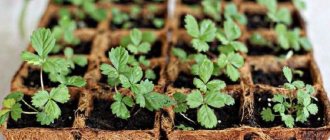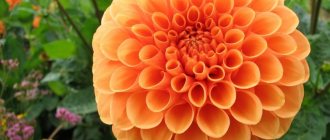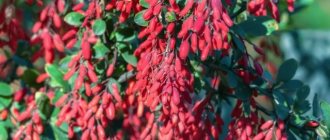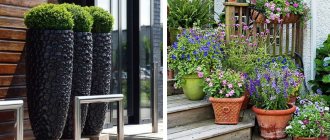- Type: host
- Flowering period: July, August
- Height: 15-60cm
- Color: white, lilac
- perennial
- Winters
- Shade-loving
- Moisture-loving
Plants that amaze with their amazing beauty and can remain attractive throughout the season are welcome guests in suburban areas. One of these representatives of the plant world is the hosta, which can rightfully be considered the “princess” of any flower bed. The picky and unusually beautiful hosta plant is very popular in landscape design. In a flower garden, on a rocky hill or near a pond, the plant never ceases to amaze with its endless variety of varieties and amazing colors.
Marvelous plants with large leaves, painted in various shades of green, often occupy one of the central places in flower arrangements. Landscape design with hostas is particularly elegant and sophisticated: elegant flower arrangements, complemented by decorative foliage hosts, look simply stunning.
Hostas that form airy green “cushions”, visually softening the transitions between beautifully flowering elements of the flower garden, are able to bring harmony to the composition
The main advantage of these plants, beloved by many gardeners, is their ability to grow in any conditions. Khosta is an excellent neighbor to many plantings, which is an important factor when arranging landscape design. An absolutely unpretentious plant easily tolerates both small partial shade and dense shading. But still, the plant feels most comfortable in slightly shaded areas, hidden from direct sunlight and strong gusts of wind.
In tandem you can choose other shade-loving plants:
When choosing a place to place hostas, many gardeners use a little trick. Having initially purchased two copies of the plant, they plant them in different places on the site, and a year after planting, they determine the most suitable place for the hosta based on the appearance of the plants, the richness of their shades and the amount of green mass they have grown.
“Queen of Shadow” is very popular among gardeners also because it is not only easy to care for, but also durable. Long-lived perennials are able to maintain decorative properties for 20-25 years. Hostas are also very popular among arrangers: the leaves of the plants are used to create flower arrangements and make bouquets.
- 2 Which varieties are considered decorative?
- 3 Create a contrast of compositions and shapes
- 4 Proper care of such a plant
Benefits of using hostas for garden decoration
Hostas (funkias) are quite popular plants that can often be found in the garden. The secret to their widespread use is this:
- Unpretentiousness in cultivation - these flowers do not require any special conditions or soil components.
- The plant is a real long-liver - it grows and blooms successfully in the country for 20 years, and sometimes more.
- It is not for nothing that Hosta is considered the queen of shade - it prefers semi-shaded or even heavily shaded places, so it can be used in almost any part of the garden.
- Greenery can have different shapes (round, heart-shaped, narrowed) and surface characteristics (smooth, wrinkled, matte, grooved, etc.), so it goes well with a wide variety of colors.
- In addition to garden design, hostas (especially their green part) are used in creating beautiful flower bouquets.
- Plant varieties are extremely diverse in stem height (some grow up to 19-20 cm, others can rise up to a meter). Thanks to this, you can create a wide variety of flower arrangements.
Important! Since hostas live and decorate the site for a very long time, gardeners initially carefully determine the place where the plant will feel most comfortable. To do this, you can plant 2-3 identical flowers in places with noticeably different conditions (shade, soil, level above the ground) and see after a year where the flowers are most bright and where the greenery grows the most.
Choosing a location and optimal growing conditions
Choosing a place for a flower is very important, because it is supposed to be planted not for 1 season, but for a long time. It is better to take care of growing conditions in advance, taking into account the following rules:
- Different varieties of the “queen of shadows” have a common property: they love shaded conditions with inconsistent sunlight. Therefore, their flower beds are often located near garden trees or outbuildings. The fact is that if you plant flowers in an open area, then strong sun can have a bad effect on the coloring of the greenery - over time it will become paler, and burns may also appear.
- Hostas love moisture, so it would be optimal to plant them in low-lying areas of the garden, where moisture will accumulate after heavy rains, or near artificial reservoirs. If the summer is dry, then you will need to water frequently and abundantly - flowers do not develop well on dry soils.
- Plants should only be planted in well-dug soil. Large earthen stones must be broken. If weed rhizomes are found, they should be removed.
Important! The decision to choose a location must be made taking into account the characteristics of a particular hosta variety. For example, varieties with rich green leaves like strong shade, while plants with yellow-orange shades of green prefer semi-shade. For them, the best option would be a place that is well lit in the morning and almost completely goes into shade during the day.
Care
Planting hostas and caring for them in open ground does not take much time. After planting, the host takes root within 4-5 weeks; during this period, it needs nothing but water. Unless it's shading. In the first two years of life in a new place, the hosta is not fertilized; the nutrients provided during planting are sufficient for it.
The peduncle, if it appeared in the first year, must be broken off. In subsequent years, flowers can be left. In varieties of beautifully flowering hostas, the flowers are always left (except for the first year); in hostas purchased for decorative leaves, the flower stalks are broken off as soon as they appear. If you don’t break out the flowers in time, the bush will begin to fall apart in width and will resemble someone’s nest.
In the third year, the hosta can be fed with chemical mineral fertilizers 1-3 times per season. The first time is when young leaves appear. The last feeding can be done no later than the beginning of July.
The fertilizer composition should contain equal parts of nitrogen (N), phosphorus (P) and potassium (K) NPK (1:1:1). It is recommended to fertilize in July with fertilizer with a high phosphorus content NPK (1:2:1), so the plant will have time to rebuild and prepare for winter.
In cold areas, bushes are additionally covered with foliage for the winter. In spring, the leaves are very carefully moved apart so as not to damage the young shoots. Hosts are slow-witted and wake up quite late.
Some varieties of hosta may hatch only in June, so you should not panic in advance that your pet has not overwintered.
Photo gallery
Hostas in solitaire plantings
One of the features of the hosta, which distinguishes it from many other ornamental plants, is that it is completely self-sufficient in order to be used in individual plantings. Such plantings are also called solitary plantings. For this method of decoration, varieties with large bushes and bright greenery that contrast against the general background of the garden are suitable.
Solitaire hosta plantings can be used for the following purposes:
- planting in corners of the garden to define natural boundaries;
- seating on elevated surfaces allows you to visually make the hosta even larger, which emphasizes its flowers especially well;
- finally, an excellent option for solitary planting is semi-empty places where there are no other plants nearby; thus not only filling the void, but also highlighting the funkia flowers.
Important! When carrying out such planting, you need to prepare the soil well - it is advisable to make the area level and plant small greenery on it to create a beautiful background against which the dark foliage of the plant will contrast well.
To delimit zones
In addition, with the help of hosts, you can highlight and delimit individual zones on the site. For example, by planting a row of medium or several large hostas, you can separate the recreation area from the rest of the area. Of course, such plantings can hardly be called a full-fledged green hedge, but in this case the task is to “mark out” and designate the allocated territory.
The note. If you still want to create a green hedge, then you can add a number of larger plants to the hostas. From personal experience I will say that small coniferous plants, for example, juniper, are excellent for this.
Options for using hosts in landscape design
The variety of varieties allows them to be successfully integrated into gardens with a wide variety of designs. You can use flowers to create classic flower beds, plant them in combination with other plants, or create entire multi-tiered compositions that well organize the interior space of the site. Everything mainly depends on the gardener's ideas. In this case, the height of the plant is of great importance - large ones are often planted singly, and small ones serve as the basis of a flower arrangement. Here are just some design moves that can be used when planting hostas:
- Planting small bushy hostas (no more than 20-25 cm in height) in a continuous strip is well suited for emphasizing slopes, in the corners of the garden, as well as for rockeries (small rocky flower beds of various shapes). Such low species are also called ground covers - they perfectly hide the soil and create the effect of a green root. Also, in the shade of their thick leaves, some weeds die from lack of light
- Varieties with a height of 28-30 cm are well suited for creating green borders. They can be planted both around the perimeter of the garden and on the internal borders that separate one group of flowering plants from others.
- Hostas with an average stem height (up to half a meter) are often used to create compositions with other varieties or other crops. They highlight tall and medium-sized plants well (especially lilies and gladioli).
- Taller plants (from half a meter to 60-70 cm) are often used for planting along ponds and garden paths. They create a framing effect that visually highlights the paths. They also form a background for taller flowers.
- The tallest hostas are used in solitaire plantings, as discussed above. They also fit harmoniously into rock gardens - among the large stones, the image of a large branched tree growing in the mountains is created. In addition, against the background of light stones, the plant contrasts well due to its dark greenery.
- A hosta flowerbed can be created from plants that are uniform in height, or from plants that are different. The latter option is often more interesting, since you can create a multi-tiered composition with a gradual increase in height from the edges to the center. This allows you to feel the effect of movement and organize the space of the flowerbed on which you can plant other flowers.
What varieties are considered decorative?
Lush “pillows”, as if woven from dove, blue and golden leaves, can bring extraordinary colors to the garden’s palette.
Perhaps the most common variety, which has long taken root in suburban areas, is hosta plantain. The plant, decorated with large light green leaves, is capable of forming “pillows” 60-80 cm high
Breeders never cease to amaze, creating new varieties that amaze with the contrast of shades and texture of foliage. Two and even three-colored hostas are the most decorative.
Recent Entries
Lilac perennials that are beautiful, compact and do not crowd out other plants Why when buying seedlings you should not take the sellers’ word for it and how to determine the age of the plant using 3 signs Tomato seedlings have turned purple or whitish: why the color has changed and how to save the plants
'Whirlwind' with white leaves edged with an apple-green outline is a striking representative of the tricolor varieties of perennial beauties
The 'Striptease' variety looks no less impressive, decorated with an elegant whitish stripe breaking through the center of the leaf through a rich, wide dark green border.
One of the latest trends in hosta breeding is the creation of varieties with a wavy edge of the leaf blade.
The varieties 'Medusa', decorated with a clump of green-yellow foliage, and 'Hadspen Heron' with bright green fan-shaped leaves have a special charm.
A feature of varietal plants is their slow mass growth. Such hosts acquire sufficient decorativeness only at the age of 4-5, and are able to fully demonstrate their beauty only at the age of 8-10 years. Gradually, from year to year, forming larger and larger leaves, which acquire the color and shape characteristic of the variety, small, inconspicuous bushes turn into real “queens of the flower garden.”
What hosta goes with: choosing plant companions
Along with many of the advantages discussed, the hosta has one more: it does not compete with other plants and gets along well with most of them. The only exceptions are those who love an abundance of light. For example, roses require a lot of sun, and hostas, as already mentioned, prefer partial shade or even strong shade, so they are not grown together.
Among other colors, funkia goes well with the following:
- ferns;
- conifers;
- geraniums;
- lungwort;
- primrose;
- digitalis;
- Horny goat weed;
- astilbe;
- gladioli.
It can not only highlight their bright flowers, but also show their beautiful sides due to the contrast of greenery (for example, against the backdrop of bright green ferns).
How to care for hostas: preparing for winter
In the fall and winter, hostas go into a dormant state and will not grow. When fall arrives, prune your hostas by trimming away any dead or yellow leaves. Dying leaves can still absorb nutrients from the plant, so you can help hostas conserve energy for the winter by removing these leaves right away in late summer.
Hostas that grew in containers must be buried in the garden for the winter.
Hostas are hardy plants and will survive the winter, but they will have a better chance of thriving if you prepare them for the colder months. After the ground freezes, cover the soil around the hosta with fallen leaves and build such a hut for all first-year beginners.
Leave the hostas under this cover until the last spring frost.
Compositions from hostas and other plants
When creating compositions, it is important to take into account not only the design of the future flower bed, but also the matching growing conditions (abundance of moisture and shelter from direct sunlight)
Flowerbeds with heucheras and hostas
The composition of hosta with heuchera is one of the most successful options of its kind. This is explained by the fact that heuchera has flowers of delicate light shades (from white to red). They stand out well thanks to the juicy, dense greenery of the funkia. When creating a composition of these crops, it is important to take into account that heuchera grows up to half a meter in height, so it can be planted in various combinations with low-growing hosta. If the choice fell on large and tall hostas (from 80 cm to a meter), then they should always be planted in the background so that the heuchera does not get lost in their bushes.
Hostas in combination with astilbes
Astilbe and hosta share a love for shade, which is why they are often used together when creating compositions. The options for their use are limited only by the gardener’s imagination. Here are just a few of them:
- Create a beautiful garden frame using alternating hostas and astilbes.
- Arranging a flower arrangement to create a border along garden paths or ponds.
- An excellent option is a circular composition around a shady garden tree, which will fill the empty space underneath it.
- Finally, such compositions are often used to frame a lawn with even greenery in bright shades.
Other flower arrangements
Hosta fits into flower beds and other types of compositions with many plants, since varieties have different stem heights.
Basically, design moves are based on 2 ideas:
- Contrasting bright colors against the background of dark green hostas - gladioli, lilies, irises, delphiniums. The plant also contrasts well against the background of soft green foliage (small lawn vegetation, ferns).
- Creating multi-tiered compositions with height differences due to hostas and other plants. For example, the same gladioli can be placed in the background, and small varieties of hosta can be grown right in front of them. This will create the effect of upward movement due to the tiering and shape of the gladioli flowers.
Functionia can be used in a variety of ways, since there are many types of plants, and each of them has its own characteristics. At the same time, caring for the plant will not be difficult, so hosta is the choice of many gardeners, both among amateurs and professionals.
Along the paths
Hostas can also be planted along paths. This will help smooth the transition between artificial elements, such as stone tiles, and other plants.
Advice. Avoid planting hostas with large leaves too close to paths. Otherwise, when it rains, the weight of the water may cause the leaves to end up on the road, where they may be accidentally damaged by a passing person.











